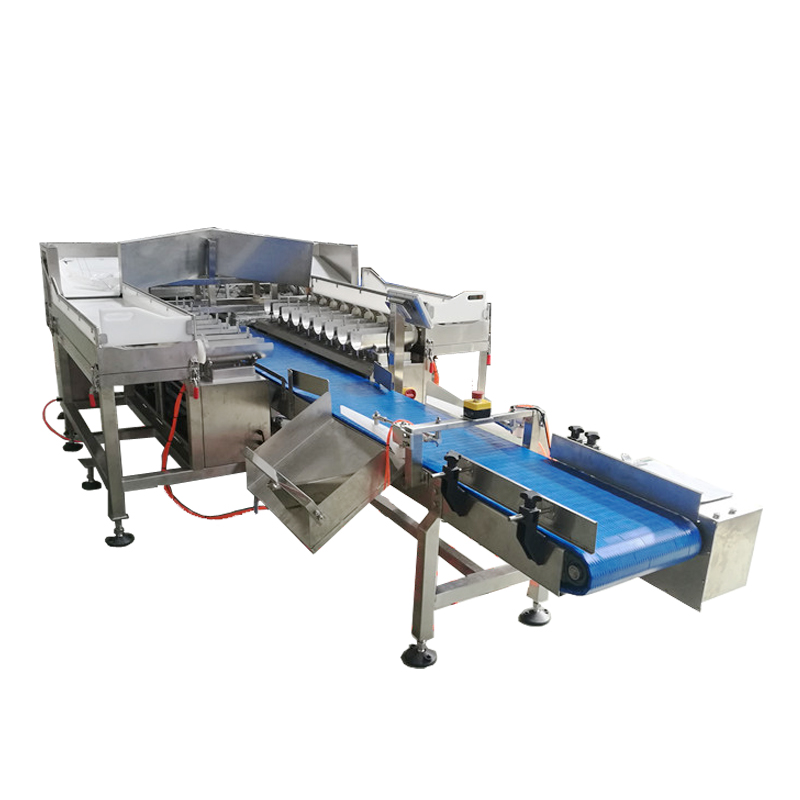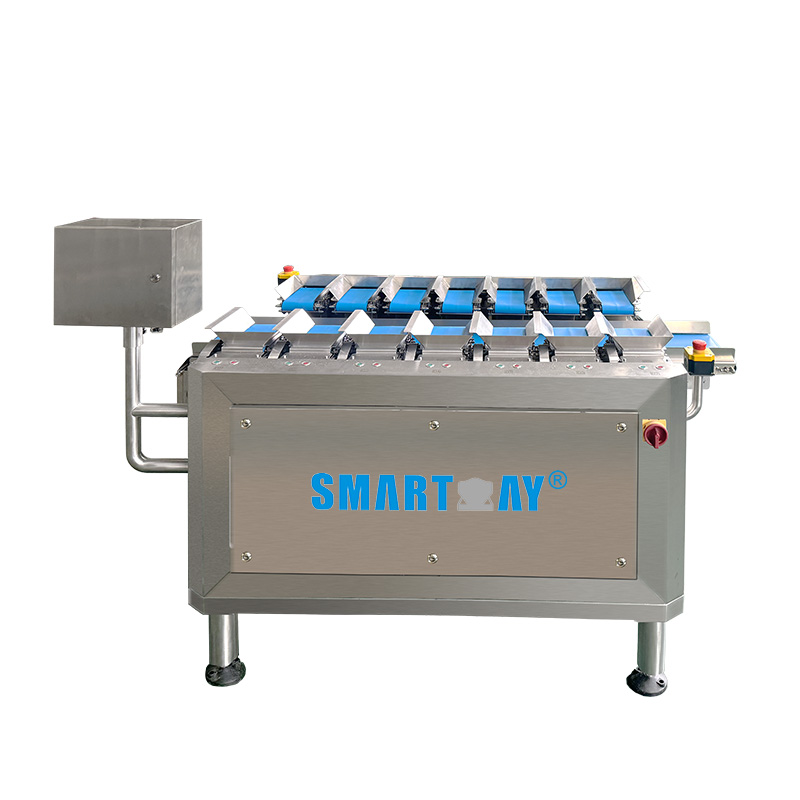Since 2012 - Smart Weigh is committed to helping clients increase productivity at a reduced cost. Contact us Now!
Since 2012 - Smart Weigh is committed to helping clients increase productivity at a reduced cost. Contact us Now!
A target batcher is an advanced weighing and packaging machine designed to create precise, fixed-weight batches of products. It is commonly used in industries that require high accuracy and efficiency, such as food processing and packaging.
The target batcher plays a crucial role in ensuring product consistency, reducing material waste, and optimizing production efficiency. Its ability to provide accurate measurements helps maintain product quality and meet regulatory standards.
A target batcher typically includes multiple high-precision weighing heads, load cells, a control unit, and software integration. These components work together to ensure accurate and efficient weighing.
The weighing and packing machine uses its weighing heads to measure individual product pieces. It then combines these pieces to achieve a target weight, ensuring each batch meets the desired specifications. If you specify a single product weight range on the touch screen during the weighing process, products that fall outside of the range will be excluded from weight combinations and rejected.
Target batchers are widely used in the food processing industry, particularly for seafood, meat, and poultry. They are also used in other sectors where precise batching is essential, such as pharmaceuticals and chemicals.
* High-precision weighing heads
* Fast and accurate batching
* Robust construction with stainless steel materials
* User-friendly touch screen interface
* Integration with advanced software for real-time monitoring
The machine uses advanced load cells and multiple weighing heads to ensure precise measurements. This reduces errors and ensures consistent product quality.
* Improved accuracy and consistency
* Increased production efficiency
* Reduced material waste
* Enhanced product quality
* Greater flexibility in handling different product types


Multiple High-Precision Weighing Heads: Ensures accurate and efficient batching.
Material: Constructed with high-grade stainless steel for durability and hygiene.
Capacity: Designed to handle high volumes efficiently.
Accuracy: Equipped with advanced load cells for precise measurements.
User Interface: Intuitive touch screen for easy operation and monitoring.
How do these specifications impact performance and efficiency?
The precise specifications ensure that the machine can handle high volumes of products with minimal errors, increasing overall production efficiency and reducing downtime.
Setting up a target batcher involves calibrating the weighing heads, configuring the control unit, and integrating it with the production line. Operators use the touch screen interface to manage the batching process and monitor performance.
1. The product is fed into the machine manually
2. Individual pieces are weighed by the weighing heads
3. The control unit calculates the optimal combination to meet the target weight
4. The batched product is then packaged and moved down the production line
Automation reduces the need for manual intervention, increases speed, and ensures consistent accuracy. It also allows for real-time monitoring and adjustments, further enhancing efficiency.
Target batchers are used for packaging fish fillets, meat portions, poultry, and other seafood products. They ensure each package meets specific weight requirements, reducing giveaway and improving profitability. In seafood processing, target batchers weigh and batch products like fish fillets, shrimp, and other seafood items, ensuring precise packaging and minimal waste.
What maintenance services are required for a target batcher?
Regular calibration, cleaning, and inspection of the weighing heads and control unit are essential. Preventive maintenance schedules help ensure optimal performance and longevity.
How does regular maintenance improve the lifespan and performance of the machine?
Regular maintenance reduces the risk of breakdowns, ensures consistent accuracy, and extends the machine's lifespan by keeping it in optimal working condition.
✔Accuracy and capacity requirements
✔Compatibility with existing production lines
✔Ease of integration and use
✔Support and maintenance services offered by the manufacturer
In conclusion, a target batcher is a vital tool for industries needing precise, fixed-weight batches, such as food processing, pharmaceuticals, and chemicals. With high-precision weighing heads, advanced load cells, and a user-friendly interface, it ensures product consistency, reduces waste, and boosts production efficiency.
Industries benefit from its automation and real-time monitoring, which streamline operations and minimize manual intervention. When choosing a target batcher, consider accuracy, capacity, compatibility, and the manufacturer's support services.
Regular maintenance, including calibration and cleaning, is essential for optimal performance and longevity. Investing in a high-quality target batcher, like those from Smart Weigh, guarantees efficiency, accuracy, and reliability in product batching.
CONTACT US
Building B, Kunxin Industrial Park, No. 55, Dong Fu Road , Dongfeng Town, Zhongshan City, Guangdong Province, China ,528425
How We Do It Meet And Define Global
Related Packaging Machinery
Contact us, we can give you professional food packaging turnkey solutions

Copyright © Guangdong Smartweigh Packaging Machinery Co., Ltd. | All Rights Reserved